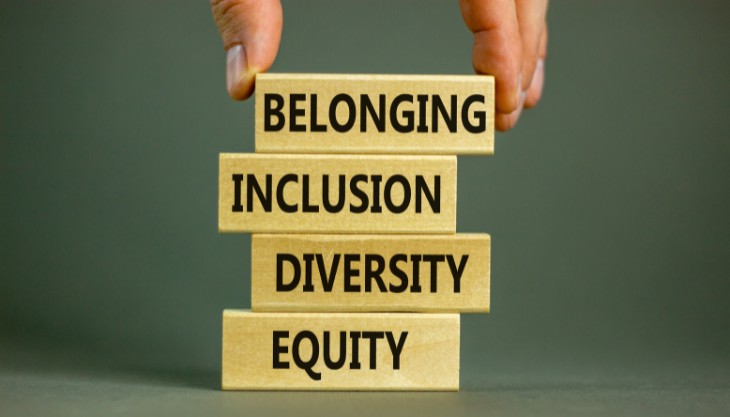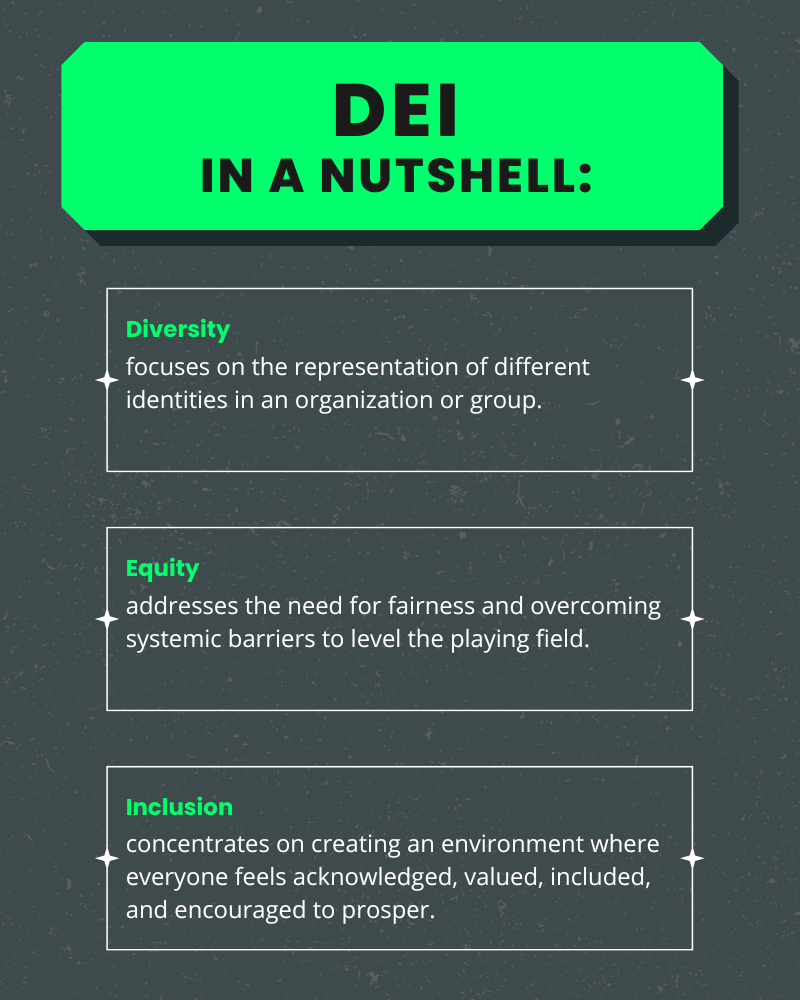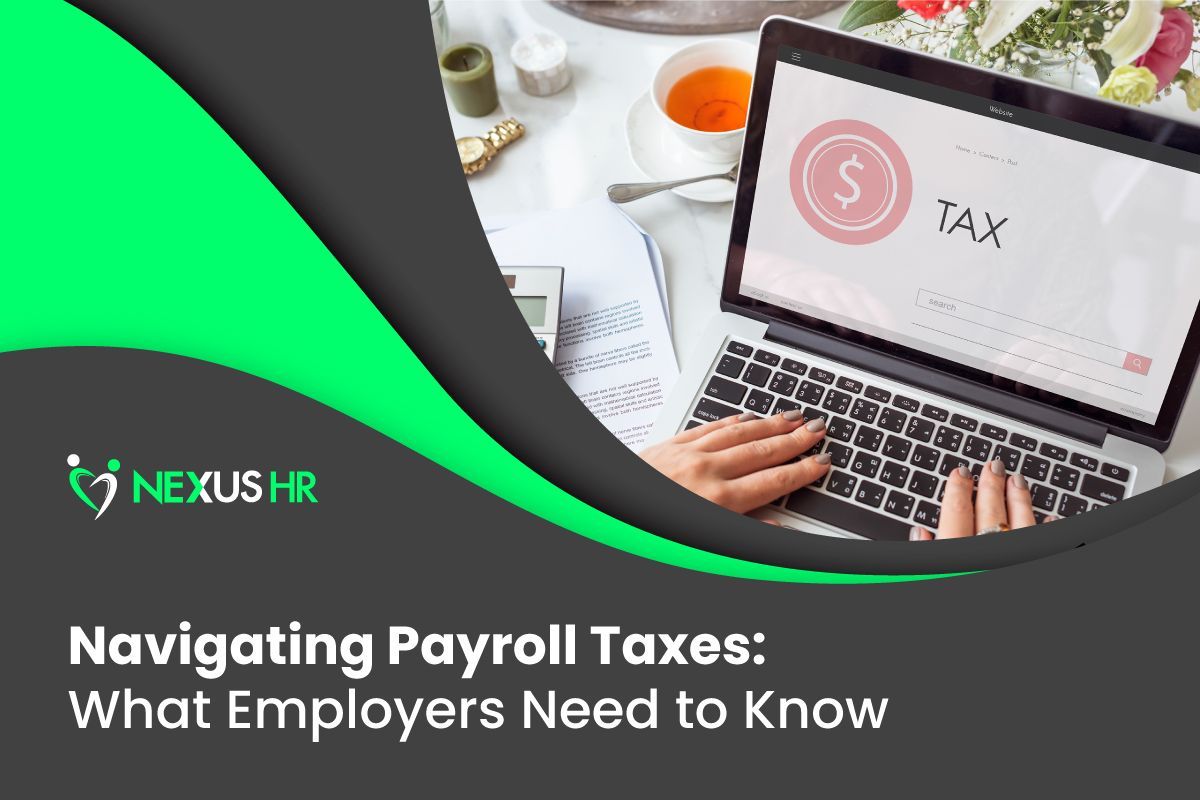What is DEI in the Workplace?
Diversity, equity, and inclusion (DEI) in the workplace means creating an environment where all members feel included and connected, enabling them to be their true and complete selves inside and outside the office.
The result? Companies ramping up their DEI efforts experience
better business outcomes.
A few years ago, companies worldwide started aggressively adopting DEI programs. According to
LinkedIn data, between 2015 and 2020, the global market experienced a 71% uptick in DEI roles.
Unfortunately, it didn’t last long. Workforce intelligence firm
Revelio Labs found that companies have been backpedaling in their DEI efforts before 2020 ended.
“Attrition rates for DEI roles have outpaced those of non-DEI roles at more than 600 U.S. companies that laid off workers since late 2020,” stated the Revelio report. “And [they have] accelerated quickly in the last six months.”
So is DEI just a fad? Or is it vital to creating and maintaining a healthy work environment?
What does having a diverse, equitable, and inclusive culture in your organization mean? How does it benefit you? And how do you get started?
Diversity, Equity, and Inclusion: What’s the Difference?

As inclusion strategist Vernā Myers’ put it, “Diversity is being invited to the party. Inclusion is being asked to dance.” And equity is ensuring everyone has access to the dance floor regardless of where they’re coming from.
While diversity, equity, and inclusion are interconnected and often used together, they represent distinct aspects of creating a more inclusive and equitable work environment. Here's a breakdown of each concept:
Diversity
Diversity refers to the representation and presence of people from various backgrounds at all levels of a particular organization, including positions of leadership and influence.
According to
McKinsey & Company, it’s about
who
is represented in the workforce. Diversity encompasses various dimensions, such as gender, age, ethnicity, nationality, physical ability, neurodiversity, socioeconomic class, and religion.
Promoting diversity in the workplace involves recognizing and valuing these differences and ensuring that people from diverse backgrounds have opportunities to participate and contribute equally.
Equity
Built In defines equity as ensuring that practices and programs are impartial, fair, and provide equal possible outcomes for every individual.
Equity is about identifying and acknowledging that despite their effort and merit, people can still experience systemic barriers that prevent them from accessing equal opportunities, resources, and power to thrive.
Promoting equity in the workplace means addressing these barriers and actively working to eliminate discrimination, bias, and disadvantage while also considering historical and structural factors that contribute to inequality.
Inclusion
Inclusion refers to creating an environment where diverse individuals feel welcomed, respected, valued, and connected.
According to Inclusive Employers, an inclusive workplace culture is one where people from different backgrounds can come to work, feel comfortable to be their true selves, and be confident to perform their duties in a way that suits them.
More than just representation, inclusion involves actively dismantling exclusionary practices. Inclusion is about embracing diversity and ensuring everyone's perspectives, ideas, and contributions are recognized and included.
Read More:
5 Ways to Improve Inclusivity in the Workplace

How Does a DEI Strategy Benefit Your Organization?

Whether you've been in business for a long time or are just starting, implementing an effective DEI strategy will benefit your company’s overall performance. Here are three key advantages of DEI initiatives in the workplace:
Better Talent Pool
A study by The Manifest reveals that 70% of job seekers consider the commitment to diversity a crucial factor when evaluating a potential employer. Among Gen Z job seekers, that number is 83%.
Creating a diverse, equitable, and inclusive work environment attracts top talent from different backgrounds. On the other hand,
not
having any DEI initiatives could mean your
recruitment team is leaving a vast talent pool untapped.
Read More:
Class of 2023: Understanding Job Market Expectations of Recent Grads
Better Performance and Profitability
Multiple studies show that nonhomogenous teams perform better. They are more fact-focused, more careful about processing those facts, and more innovative.
According to
Deloitte, organizations with inclusive cultures are twice as likely to meet or exceed their financial goals. McKinsey & Company also supports this, citing that companies with the most ethnically diverse executive teams are 33% more likely to outperform their peers on profitability.
By taking concrete steps to make your members feel welcomed, respected, and valued for who they are, your organization is helping them become more productive and engaged in their work.
Higher Employee Retention
According to the 2022 Gen Z and Millennial Survey, a diverse and inclusive culture is a critical issue regarding employee retention. The study shows that employees who are satisfied with their employers’ efforts to create a diverse, equitable, and inclusive work environment are likelier to want to stay with the company for more than five years.
When employees feel their voices are heard and their ideas valued, they tend to feel more connected and loyal to their organizations. They tend to stay longer in environments that give them opportunities to play a part in shaping the workplace culture.
Read More:
5 Ways to Increase Employee Retention
How to Create a DEI Strategy

If your organization is committed to fostering an inclusive and equitable work environment, a DEI strategy is essential. However, every company’s journey to creating its DEI strategy is unique, and there is no one-size-fits-all solution.
If you’re looking to get started with your organization’s DEI program, here are some steps you can take to kick off the process:
1. Know Your Driving Force
Before any organization can build a DEI strategy from the ground up, you need to understand what your driving force is for doing so.
Why does DEI matter to your organization? What makes a DEI strategy so important? How does it align with your organization’s purpose, vision, and mission? What results are you expecting to get?
“Your ‘why’ can be your north star,” says Shake Shack’s Director of Diversity, Equity, Inclusion, and Culture
Idris Stover. “It will help guide everything you do to support your company’s DEI strategy and business objectives.”
Only after honestly answering these questions and being transparent about your motivations can you start building a successful and strategic DEI management plan.
2. Gather DEI Data
Now that you understand your “why,” your next step is figuring out how your organization’s current diversity, equity, and inclusivity efforts are doing and in which areas you need to improve. Start by measuring DEI in your workplace quantitatively and qualitatively.
How are different groups in the company represented? Get the percentage of your employees based on age or generation, gender, differing abilities, ethnic backgrounds, etc.
How do your current and potential employees perceive your company’s DEI efforts? Are they engaged? Do they feel heard? Do they feel like they belong?
JPMorgan Chase’s Global Head of Diversity, Equity & Inclusion
Brian Lamb recommends conducting opinion surveys to understand how your team members feel about your DEI initiatives.
3. Get Buy-In from Company Leaders
To make a DEI strategy work or even gain traction, you need to get other team members involved. Start by seeking buy-in from your organization’s leaders and decision-makers.
Comcast Cable’s Senior Vice President and Chief Diversity Officer
Loren Hudson says that getting senior leadership to be personally invested in your DEI efforts is one of the most important things you can do to achieve your DEI goals.
Hudson explains that when senior leaders intentionally diversify their teams and create opportunities for diverse groups to come together, it “gets the ball rolling.”
If your DEI initiatives involve revamping processes, implementing company policies, and launching new projects, you will need your company leaders' support and influence.
4. Start with Small, Achievable Goals
Building a DEI strategy from the ground up is no easy feat. It’s a long-term commitment that requires continuous momentum and support. Don’t burn yourself and your team out by doing everything simultaneously.
“Don’t try to boil the ocean,”
Idris Stover advises. “It’s perfectly OK to start small, which allows you to be intentional, build momentum, and create a sustainable DEI strategy.”
Get your DEI program into motion with small, actionable, achievable goals. They are easier to do, track, and measure.
An example would be taking steps toward a more inclusive
recruitment strategy by implementing an anonymous system of reviewing resumes to avoid triggering certain biases. You can also modify job descriptions to avoid
gender-charged descriptions.
Read More:
How To Write The Perfect Job Description
5. Assess Your Efforts
A successful DEI strategy involves more than getting DEI initiatives to run; it’s also about ensuring they work and align with the organization’s purpose, vision, and mission.
Is the DEI program making an impact? Are there changes in the workplace culture, employee behavior, and team morale?
Find out how your DEI efforts are doing by getting the employees’ perspectives. Stay interviews are an excellent way to gather this information in a meaningful, structured, and safe setting.
Read More:
What is a Stay Interview? And How Do I Conduct One?
By measuring and assessing your DEI efforts, you can find ways to improve your implementation. You can also secure accountability by communicating your progress and obstacles with key stakeholders.
Nexus HR Helps You Narrow Your Organization’s DEI Gap

A strong diversity, equity, and inclusivity strategy can help advance your employees’ quality of life (and work). However, a well-planned and well-executed DEI program will take time, effort, and collaboration.
As a business leader, you must have the time and energy to develop a strategy, speak to company decision-makers, gather data, measure progress, and get employee feedback. Not sure if you can handle all that? Nexus HR is here to help.
As a
full-service human resource partner, Nexus HR’s team of
HR, recruiting, and payroll experts can help support you as you build your company’s DEI strategy. From updating recruitment processes, gathering employee data, and scheduling stay interviews, we’re ready to help you narrow your organization’s DEI gap and achieve the diverse, equitable, and inclusive work environment you deserve.











